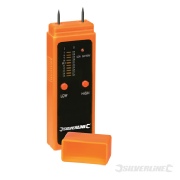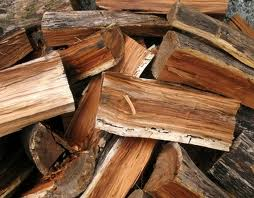
MASTER SWEEPS



I am pleased to be able to state that I am the chimney sweep of choice for the Dean of Lichfield Cathedral and recently cleared the chimney in both the Dean's home and another neighbouring grade II listed property of bird nests, succeeding where a previous chimney sweep had failed.
One of the first signs that a bird or squirrel is making a home in your chimney is the presence of twigs in the fireplace. Most commonly, jackdaws, rooks and squirrels like to nest in chimneys.
Bees, wasps and other insects also make use of the warm and sheltered place that is your chimney and can cause as many problems as those associated with other forms of wild life. On certain occasions it may be necessary to use the services of a pest control company to aid with removal, particularly those of the stinging kind!
A bee hive will need to be removed from the chimney flue once the hive has been killed off and for a number of very important reasons. Firstly, the honey stored in the hive and the hive itself are made of combustible materials. Should they ignite then there is the possibility of a chimney fire. The second reason is that the scent left behind in the hive may attract future bees and thus cause a reoccurrence of the problem. The third reason is that the hive may be blocking the flue or might dislodge and fall further into the flue and cause a blockage. Such a blockage would hinder the escape of dangerous smoke and fumes up through the flue. The fourth reason is that the honey in the hive can melt and seep through brickwork staining ceilings and walls. This staining is almost impossible to remove.
While there are occasions when a bee keeper will be happy to remove a bee hive for you free of charge from your property, keepers will not remove hives from chimneys.
A blocked chimney may result in smoke or lethal Carbon Monoxide coming into your home. or even cause a chimney fire. So, keeping your chimney clear of blockages is vital!
I can remove most blockages and, if you call to discuss this, I can establish what has happened, how I can remove it and how to prevent it happening again.

All birds, their nests and eggs are protected by law and the penalties for deliberately destroying active nests are now quite severe.

Since there may be eggs or even hatched chicks in a nest, and these may be protected, I do not remove nests during the breeding season (May to August). We should allow our newly arrived young feathered friends ample time to leave the nest before the destruction of their home should be considered.
However, not all nests or newly built nests are active. Perhaps you have just recently brought a disused fireplace back into use only to find it contains an old bird nest? Also, birds will on occasions and for a variety of reasons start to build a nest and then abandoned that nest to build a new nest elsewhere. There are a number of signs to look out for when trying to establish if a nest is active. If you are uncertain if the nest you have in your chimney is active please feel free to contact me and I will offer information / advise to help you in ascertaining if the nest is likely to be an active nest or not.
Squirrels can be a problem but usually once the nest is destroyed these furry creatures will vacate and make a new home somewhere else. To prevent a return visit you should consider having an appropriate cowling fitted.
I recently rescued a blackbird that had fallen down a chimney and ended up being trapped behind the metal baffle plate of a woodburner for three days. I was able to free the feathered creature from it's cast iron tomb and release it back into the wild. The stove owner was particularly happy as he was then able to use his stove again.
I have a similar tale concerning a pigeon that was trapped in the flue of a chimney for 7 days and was still alive when I gently pulled it out!
Other birds are not so lucky. Nonetheless, they still need to be removed even though they have already departed this mortal coil since they continue to block the chimney flue and thus prevent the gases and smoke from exiting up through the chimney.
Warning!!! Never attempt to clear a nest from your chimney by lighting a fire. At best you will simply fill your home with smoke. At worst you could cause a chimney fire with subsequent damage to your home and perhaps your neighbour’s home as well.
Landlords / Letting Agents Responsibilities
Landlords / agents are not permitted to put a clause in a tenancy agreement stating that the tenant is responsible for maintaining solid fuel heating systems as this is described as a unfair contract term (Office of fair trading 2005). So you cannot get your tenant to discharge your duty of care for you. (Unless a court order has been issued).
Should a chimney fire occur then thousands of pounds could be lost in damage and loss of rental earnings while the property is repaired. Not to mention any claim that a tenant may make against the landlord for failing to maintain a chimney flue appropriately.
If the landlord looks after a solid fuel appliance, i.e. has it swept by a competent person, then they would have discharged their duty of care towards their tenants and would be keeping their own property safe from unnecessary fire risks and unwanted legal claims.
Remember, as a landlord you have a duty of care to your tenant/s, and as such blocked flues that subsequently cause death or injury could result in the landlord being tried for criminal negligence or in extreme cases a manslaughter prosecution may arise.
As well as making sure that all gas appliances are serviced annually it is also the landlords responsibility to make sure that the flue ways are cleaned annually by a qualified chimney sweep.
To tackle the number of deaths each year from carbon monoxide poisoning the health and safety executive has documentation stating that all gas flues need to be swept annually by qualified chimney sweeps and that this responsibility cannot be passed on to the tenant.
Tenants Responsibilities
A landlord cannot make a tenant responsible for the entire solid fuel system by putting clauses in a tenancy agreement. However, a tenant has certain responsibilities placed upon them. These responsibilities are:
* A tenant must help to look after a fire appliance if they are using it.
* A tenant is responsible for using a solid fuel heating system in line with the manufactures instructions. (landlords must provide literature for the relevant appliance).
* A tenant should use only appropriate fuels for the fire / appliance.
* A tenant should inform the landlord / agent as and when defects arise with the fire appliance.
Although most landlords / agents now take their responsibilities seriously and maintain solid fuel systems appropriately, many landlords / agents may still try to pressurise tenants into maintaining fire appliances for them.
As a tenant, if you are in doubt as to who is responsible for what aspects of the heating system in your home, such as having your chimney swept, please click on this link for further advice. While the article refers to gas flues the same facts are extended to solid fuel chimney flues where that system is the primary heating source.
While the various documents referenced and linked to on the site refer to gas appliances, where reference is made to flues, such reference includes any and all flues designed to carry away poisonous gases from an appliance in a dwelling, including solid fuel appliances, e.g. coal fires and multifuel stoves.
Tenants should ensure their landlord / letting agent has the chimney swept and inspected on a yearly basis for their own safety.

Logs & Fuels
I regularly visit log suppliers in and around the South Staffordshire and West Midlands region and randomly moisture test the logs. Some of these suppliers are selling logs / wood with an alarmingly high moisture content. Some with moisture content as high as 35%-
The correct moisture content of wood for use in a fire appliance should be less than 20%
As the winter burning season progresses the supply and availability of well seasoned logs diminishes. So, the best time to buy logs from a log supplier is in the summer to late summer months (before the winter rush for logs begins) when the logs will be reasonably well seasoned. Probably the worst time to buy logs from a log supplier is after the Christmas period / early new year. By this time the supply of seasoned wood has likely been exhausted and in response many suppliers will commence selling logs that are not appropriately seasoned.
Before buying your wood it is recommended that you ask the log supplier the moisture content of the wood they supply. Don't be surprised if the supplier says they don't know. Many log suppliers don't bother to check and few actually care. Their main objective is to sell you wood, regardless of moisture content. So, buyer beware!
You can prevent yourself from becoming the recipient of wood that is not good for burning by simply obtaining a moisture meter like one of the meters shown below. Just probe the wood by sticking the two prongs into the end of a log and read the display. If the reading is less than 20% buy the wood. If the reading is greater than 20% but less than 25% then at a push accept the load but ensure you get the load into your wood shed ASAP to allow it to season at little longer before using. If the reading is between 25% -
Moisture meters are available from a number of sources, including on-

Most people believe that it is the wood that is burning and causing the flames in their fire appliance. This is not so. It is actually the gases given off by the wood as it is heated that causes the flames and heat.
Wood that has not been properly seasoned will contain high levels of water and resins. It takes energy to drive the water and resins out of the wood and this energy, which should be delivered to the room in the form of heat, is instead used to heat up the water and resins in the wood. This is wasted energy.
This wasted energy should also have been used to heat up the wood in your fire appliance to the point where the wood begins to produce gases and vapours that are combustible and produce even more heat when ignited. Because the temperature levels required to cause the wood to produce the combustible gases and vapours that produce the heat and flames are not reached (due to the presence of water and resins in the wood) the fire produced will give off far less heat than it is potentially capable of producing.
The water and resins will be driven out of the wood during the burning process and have only one place to go, up your chimney flue. As the water (now steam) and smoke (containing the resins) travel up your flue the gases begin to cool down before they reach the top (your chimney pot). As these gases cool down they condense and adhere to the inside of your chimney (or stainless steel liner if fitted). The condensed water interacts with the resins and creosote deposits that are present in the smoke and an acid formed. This acid is highly corrosive and will eat through a steel liner in no time at all and will also eat its' way through the mortar of your chimney. Once the acid eats its' way through the mortar (the cement between the bricks) there is the potential for several other problems to arise.
For example, dangerous gases such as carbon monoxide may enter rooms upstairs, such as bedrooms. Also, a breached mortar joint will allow cool air from outside to enter into the chimney flue. This will cause the gases inside the flue to cool down sooner than they should and a vicious circle is created, causing further deposits of creosote to build up on the inside of the flue. The draw of the flue will also be reduced with the net effect that your fire will not burn correctly.
Your fire appliance will also suffer the negative effects of burning unseasoned wood. Creosote build up, for example.
Seasoned wood should always have a moisture content of less than 20%. Moisture meters can be obtained from sources such as on-
Thinking of buying a bag of wood or kindling from a petrol station forecourt? Think again. Those bags have been outside in all weathers and are likely to have absorbed a significant amount of moisture. In addition, buying your wood in this manner is not economical. Petrol stations (even some newsagents) sell these bags of wood at very inflated prices.
Softwood is good for getting a fire going as it 'catches' quicker than hardwood. Harwood burns longer (usually twice as long) and hotter than softwood. Therefore, a best practice is to start your fire off with softwood logs then add hardwood once the fire is going well.
Add wood / logs to your fire only one or two at a time. Never overload your fire appliance with wood. Doing so will cause the temperature in your appliance to decrease while energy is used to heat up the newly added wood (to produce those combustible gases and vapours). It may seem a nuisance to keep adding logs to a fire but by doing so you will help your fire to maintain a good working temperature. In turn this reduces those unwanted by products such as soot and creosote.
Are you burning your wood correctly? Simply take a look at what is coming out of your chimney pot after the fire has been going for a while. See any smoke coming out of the chimney pot? If the answer is yes, then you are not burning your wood correctly. A correctly burning fire should produce virtually no smoke from the chimney pot.
Burning wood produces much more creosote and soot than burning coal. If burning wood you should have your flue swept at least twice a year. If you use your wood burning appliance heavily over the winter period then you should consider having your chimney swept three times.
 Return To Top
Return To Top
Master Sweeps is a HETAS
registered business

Call Now On
07407 453630
07407 453630
 Home
Nests & More
Book A Sweep/Contact
Pots/Cowls/Stoves/More
Home
Nests & More
Book A Sweep/Contact
Pots/Cowls/Stoves/More

MASTER SWEEPS
# 1 CHIMNEY SWEEP SERVICE